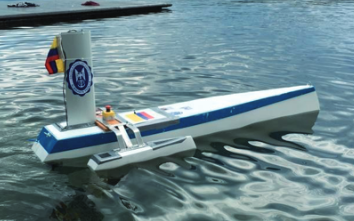Pedagogical Strategy for the Generation of Capabilities in the Development of Unmanned Surface Vehicles - USVs
DOI:
https://doi.org/10.25043/19098642.232Keywords:
Pedagogical-investigative strategy, Unmanned Surface Vehicle, Project Ship, Project Sábalo, HydrocontestAbstract
This paper presents the preliminary results of the implementation of a pedagogical-research strategy, oriented to the generation of capabilities in the development of Unmanned Surface Vehicles - USVs at the Naval Cadet School "Almirante Padilla", with the support of the Corporación de Ciencia y Tecnología para el Desarrollo de la Industria Naval, Marítima y Fluvial - COTECMAR. The strategy implemented is based on the linking of undergraduate students to research projects oriented by the Research Groups, under the guidance of the professor, who acts as a researcher and at the same time fosters the environment for cooperative and interdisciplinary work among the participating students. Three significant experiences are presented that show clear results in the development of USVs.
Downloads

Published
How to Cite
Issue
Section
License

This work is licensed under a Creative Commons Attribution 4.0 International License.
The authors who publish in this Journal certify that:
- The work submitted for publication in The Ship Science and Technology journal, was written by the author, given that its content is the product of his/her direct intellectual contribution.
- All data and references to material already published are duly identified with their respective credits and are included in the bibliographic notes and quotations highlighted as such.
- All materials submitted for publication are completely free of copyrights; consequently, the author accepts responsibility for any lawsuit or claim related with Intellectual Property Rights thereof, Exonerating of responsibility to The Science and Technology for the Development of Naval, Maritime, and Riverine Industry Corporation, COTECMAR.
- In the event that the article is chosen for publication by The Ship Science and Technology journal, the author state that he/she totally transfers reproduction rights of such to The Science and Technology for the Development of Naval, Maritime, and Riverine Industry Corporation, COTECMAR.
- The authors retain the copyright and transfer to COTECMAR the right of publication and reproduction of the work which will be simultaneously subject to the Creative Commons Attribution License (CC -BY) , which allows the license to copy, distribute, display and represent the work and to make derivative works as long as it recognizes and cites the work in the manner specified by the author or licensor.
- For more information about the Creative Commons Attribution License (CC -BY) and his use and scope, please visit the following web page https://creativecommons.org/licenses/by-sa/4.0/legalcode








